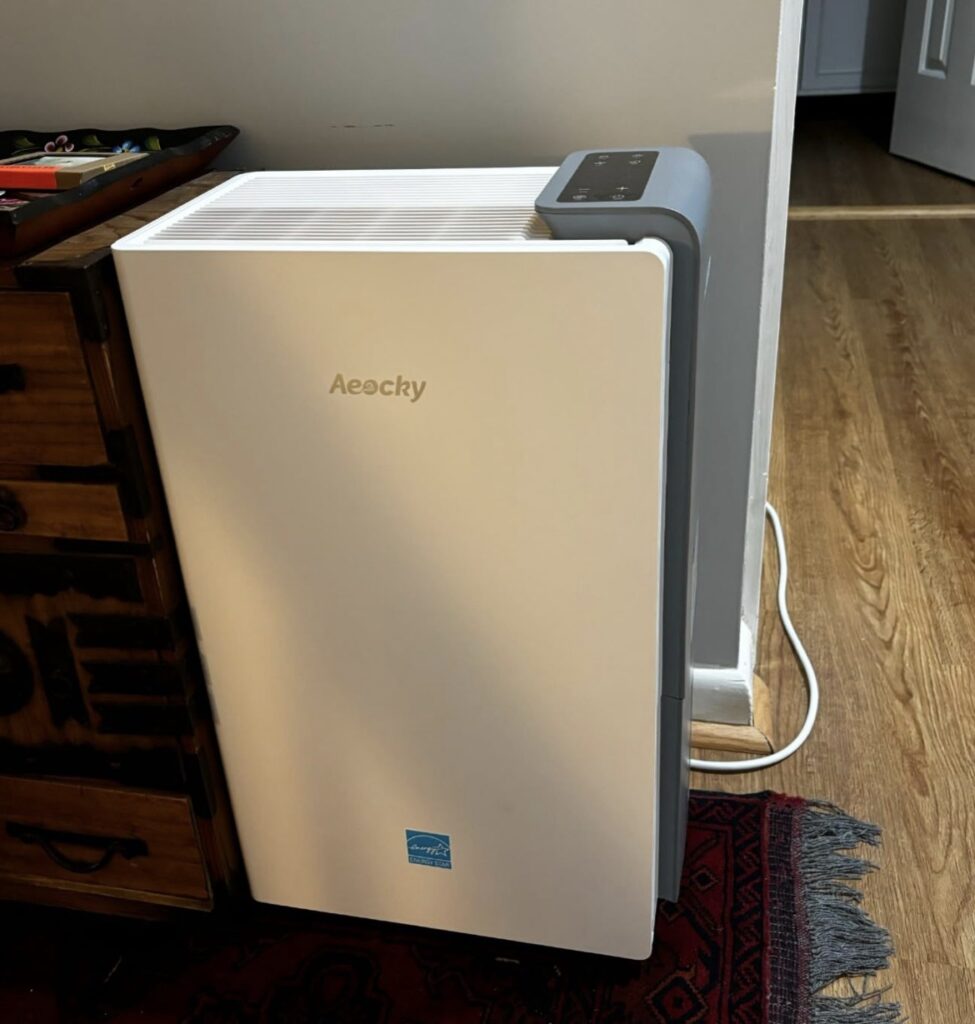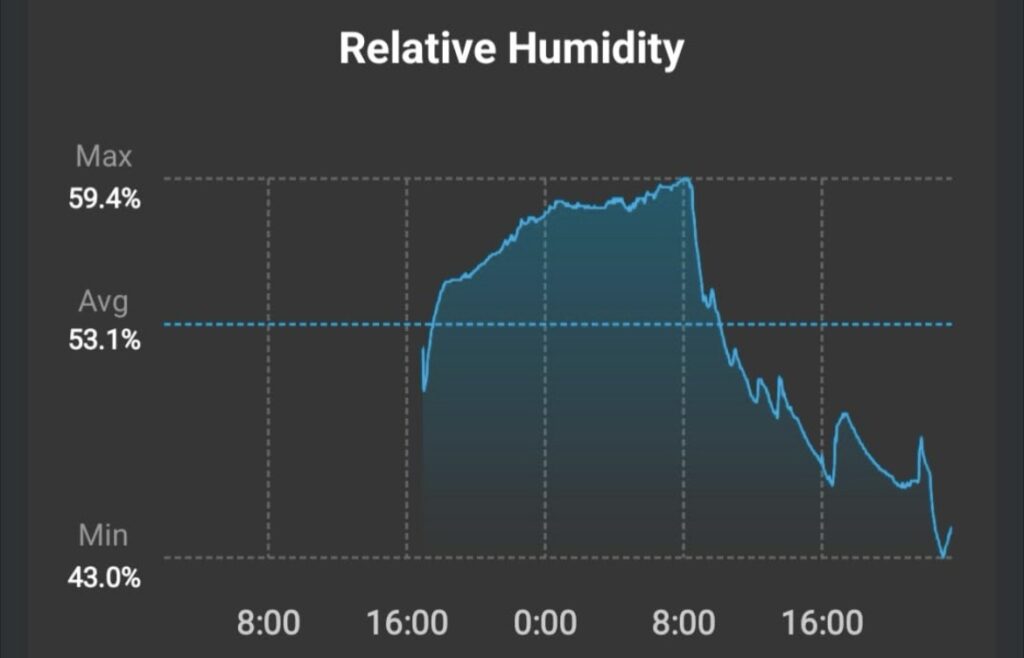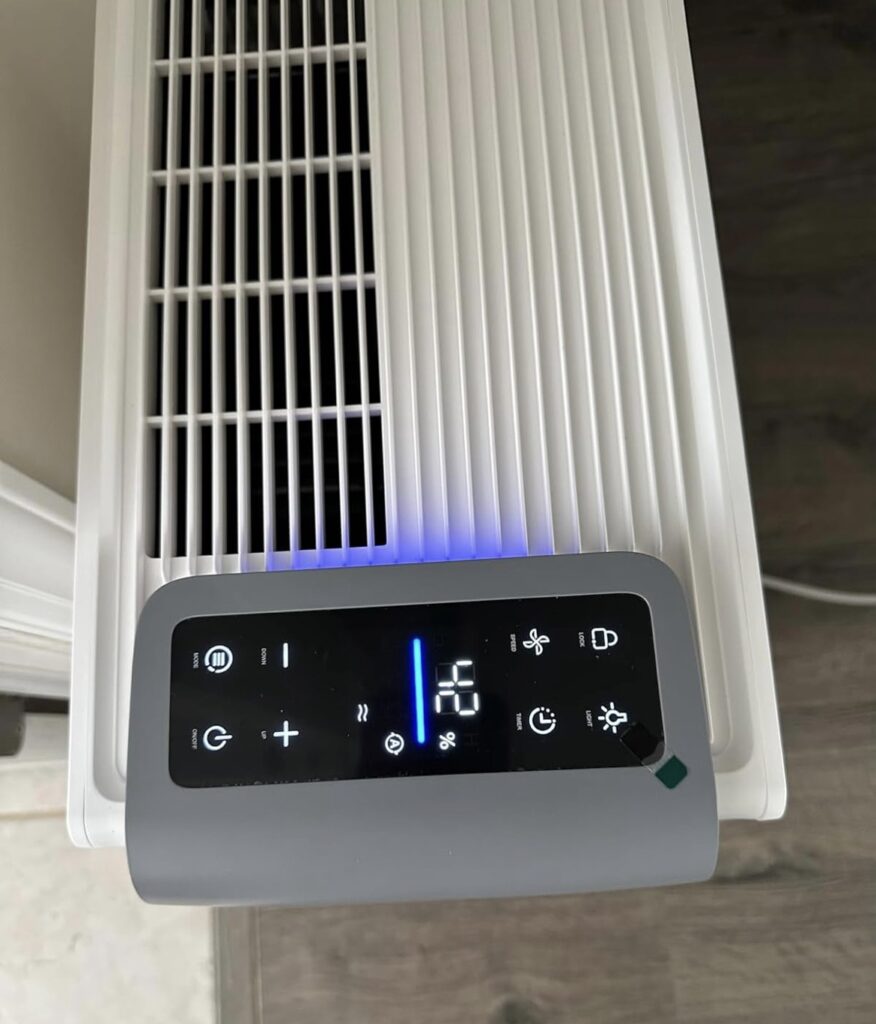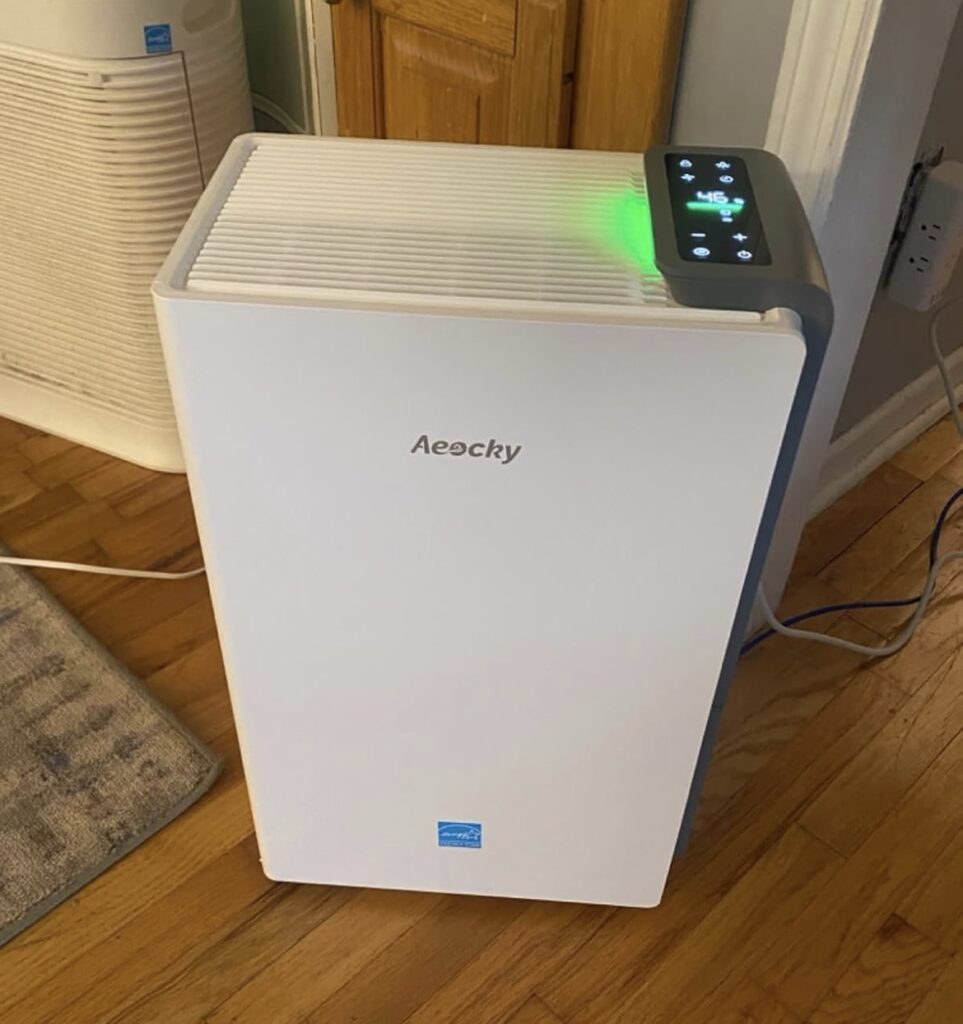
Why Condensation Happens on Windows
Window condensation is a common issue many homeowners encounter, especially during the colder months. You’ve likely noticed a thin layer of moisture forming on your windows, but understanding why it happens can help you prevent it. Condensation forms when warm, humid air comes into contact with a cooler surface, like your window. As the temperature difference causes the moisture in the air to cool and condense, you’ll see that familiar fog or droplets of water.
In most cases, condensation is simply a sign that your home is retaining more moisture than it should. However, the location of the condensation matters. Whether it appears on the inside, outside, or between window panes can indicate different issues. While condensation on the outside is a sign of excellent insulation, moisture inside the house can point to higher-than-ideal humidity levels. If the fogging occurs between the panes of a double-pane window, it often means that the seal is broken, which can affect the window’s efficiency.
As a homeowner, understanding what causes condensation on windows allows you to take targeted actions to reduce it, improving both comfort and energy efficiency inside your home.

Is It Normal to Have Condensation Inside Windows?
Condensation on the inside of your windows can feel concerning, but it’s not always a major problem—at least not right away. In some cases, it’s simply a reaction to a shift in temperature between the interior and exterior of your home. For example, if it’s cold outside and your home is warm and cozy, moisture from the inside air can collect on the colder window surfaces. This is especially common in rooms where you generate a lot of moisture, like kitchens and bathrooms, or even in bedrooms during winter.
However, persistent condensation inside your windows can point to a bigger issue: too much humidity inside your home. When the humidity level is too high for the outside temperature, windows become natural surfaces for that moisture to collect. It’s important to monitor the humidity levels, especially in cooler months, to prevent the potential damage excessive moisture can cause, such as mold growth or wood rot around the window frame.
To determine whether the condensation inside your windows is a sign of a bigger problem, check if it’s consistent across different rooms. If certain areas of your home, like the basement or bathroom, always seem to have foggy windows, it might be time to explore solutions like a dehumidifier. The AEOCKY 52 Pint Smart Dehumidifier is a perfect option to keep humidity levels under control, especially in areas prone to excess moisture. By using a dehumidifier regularly, you can not only keep your windows clear but also improve the overall air quality in your home.

Is It Normal to Have Condensation Inside Windows?
Condensation inside your windows is fairly common, but whether it’s normal depends on the circumstances. If it happens occasionally, like after a hot shower or cooking a large meal, it’s likely just excess humidity from everyday activities. However, persistent fogging inside your windows can indicate that your home’s overall humidity levels are too high for the current outside temperature, which could lead to bigger issues like mold, mildew, or even damage to window frames over time.
High indoor humidity, especially in colder months, causes the warm air inside to condense on cooler window surfaces. Rooms like bathrooms, kitchens, and basements are often the worst offenders for moisture buildup. To keep indoor condensation in check, it’s crucial to manage your home’s humidity levels. Investing in a high-quality dehumidifier is an effective way to reduce moisture and prevent window fogging. The AEOCKY 52 Pint Smart Dehumidifier is a great option for large rooms or basements, thanks to its powerful moisture control. This Energy Star-certified dehumidifier comes with a drain hose for continuous operation, making it easy to maintain ideal humidity without frequent emptying.
Joe, a verified buyer, shared that this dehumidifier transformed his basement apartment by pulling out huge amounts of moisture while operating quietly. It’s perfect for maintaining comfort without needing to run the air conditioner constantly, a key advantage in moisture-prone areas. For more moisture control tips, check out this guide to understanding high humidity in your home.

Why Do My Home Windows Fog Up?
If your home windows are fogging up, it’s important to understand where the condensation is occurring. This helps you figure out the root cause and how to address it. Generally, there are three common places where condensation forms: outside the window, inside the window, or between the panes.
Condensation on the Outside:
When condensation appears on the outside of your windows, it’s actually a sign of good insulation. This typically happens when the air outside is cooler than the temperature inside your home. The window surface cools below the dew point, causing moisture to form on the exterior glass. While this can be annoying, it’s not a problem—if anything, it means your windows are doing their job well. There’s no need to worry unless condensation remains for long periods.
Condensation on the Inside:
Condensation forming inside your windows is a more significant concern. This happens when warm, moist air inside the home meets the cooler surface of the glass, causing the moisture to condense. High indoor humidity is the primary cause, which is why controlling moisture levels is crucial. If your home tends to have higher humidity levels, especially in areas like the basement, using a dehumidifier can help. The AEOCKY 52 Pint Smart Dehumidifier is highly recommended for removing excess moisture from large rooms, making it a perfect choice for reducing condensation in moisture-prone areas.
Condensation Between Window Panes:
If you’re noticing condensation between the panes of a double-pane window, it’s a clear indication that the window seal has failed. The gas that was once trapped between the panes to insulate the window has escaped, allowing moisture to get inside. Unfortunately, this means the window is no longer providing the energy efficiency it once did. In this case, replacing the window or having the seal repaired is the best solution to restore proper insulation.
Knowing what causes condensation on windows—whether it’s from high indoor humidity, poor ventilation, or broken seals—helps you take the necessary steps to resolve the issue and prevent further damage to your home.

Fixing Condensation in Home Windows
Solving condensation issues in your home windows requires addressing the root cause—whether it’s humidity, poor insulation, or broken seals. Let’s explore a few effective solutions to reduce or eliminate condensation inside your windows.
1. Control Indoor Humidity:
One of the most effective ways to fix window condensation is to lower indoor humidity levels. This is especially important in moisture-heavy areas like basements, bathrooms, and kitchens. You can use a high-performance dehumidifier to regulate humidity. The AEOCKY 52 Pint Smart Dehumidifier is an excellent solution, designed for large rooms and basements. It features an intelligent humidistat and comes with a drain hose for continuous moisture removal, making it easy to keep humidity under control.
Verified buyers rave about its effectiveness. Joe, for instance, noted that this dehumidifier works quietly, pulls a significant amount of water from the air, and is easy to empty thanks to its clear tank design. This makes it perfect for keeping living spaces comfortable and reducing the risk of window condensation without constant maintenance.
2. Improve Ventilation:
Improving airflow in your home can also help reduce condensation. Use exhaust fans in areas prone to moisture, such as bathrooms and kitchens, and open windows periodically to let fresh air circulate. This allows moisture to escape instead of settling on surfaces like windows.
3. Repair or Replace Window Seals:
If you have double-pane windows with condensation between the panes, the window seal has likely failed. In this case, the most effective fix is either repairing the seal or replacing the window entirely. Broken seals reduce your windows’ insulation ability, leading to higher energy bills and persistent condensation.
By tackling the underlying causes of condensation—whether through better moisture control, improved ventilation, or window repairs—you can keep your home comfortable and your windows clear. For more advice on maintaining healthy humidity levels, check out this guide to controlling indoor humidity.

How to Stop Windows from Fogging Up
Preventing window condensation is all about proactive measures to manage indoor moisture and keep your home’s environment balanced. Here are some practical steps to help stop windows from fogging up:
1. Use a Smart Dehumidifier:
One of the easiest and most efficient ways to reduce condensation is by using a dehumidifier to keep your home’s humidity levels in check. High humidity is often the main culprit behind foggy windows, particularly during colder months. The AEOCKY 52 Pint Smart Dehumidifier is perfect for this job. Not only does it have a large capacity, but it also includes a drain hose for continuous water removal, allowing you to manage moisture without constant monitoring. This smart dehumidifier can be especially helpful in spaces like basements or large rooms where humidity tends to build up. Keeping humidity below 50% can drastically reduce the chance of window condensation.
2. Monitor Humidity Levels:
It’s important to maintain an optimal humidity level inside your home, ideally between 30% and 50%. Investing in a hygrometer to monitor these levels can help you stay on top of potential moisture issues before they result in window fogging. You can adjust the settings on your dehumidifier accordingly to maintain the perfect balance for comfort and window clarity.
3. Improve Air Circulation:
Proper air circulation prevents moisture from accumulating in confined spaces. Ensure that exhaust fans in your kitchen and bathrooms are functioning properly, and use them regularly. You can also keep your windows open for short periods to let fresh air in, especially after cooking, showering, or doing laundry. If your home has a ventilation system, be sure it’s working efficiently to distribute air throughout the house.
4. Check Window Seals:
Condensation between double-pane windows is a sign of a failed seal. This allows moisture to seep between the panes, reducing the window’s insulation and making it harder to stop fogging. Repairing or replacing the window may be necessary to restore its efficiency. This investment will also help keep energy costs down by ensuring your windows perform optimally.
By following these steps, you can prevent window condensation from becoming a persistent problem in your home. Regular maintenance and moisture control are key to keeping your windows clear and your home comfortable, no matter the season. For more home improvement tips, check out this comprehensive guide to DIY home maintenance tools.

When to Replace Your Windows
There comes a point when cleaning up condensation or managing humidity just isn’t enough. If your windows are constantly fogging up, especially if condensation appears between the panes of double-pane windows, it might be time to consider replacing them. Here’s how to tell if replacement is the best option:
1. Broken Window Seals:
Condensation trapped between window panes is a strong indicator that the seal has failed. Over time, the gas between the panes (which helps with insulation) leaks out, allowing moisture to get in. Not only does this reduce the window’s energy efficiency, but it also creates a foggy appearance that cannot be fixed with dehumidifiers or cleaning. Replacing the window or resealing it is the only way to restore its functionality.
2. Rising Energy Bills:
Old or damaged windows that allow moisture inside often come with the added consequence of poor insulation. When your windows no longer insulate properly, your heating and cooling systems have to work harder to maintain a comfortable indoor temperature, leading to higher energy bills. Replacing inefficient windows can help bring those bills down, saving you money in the long run.
3. Persistent Condensation Despite Fixes:
If you’ve already tried solutions like improving ventilation, lowering indoor humidity with a dehumidifier, and repairing seals but still see condensation forming, it’s a sign that your windows are no longer performing at their best. Modern windows are designed to handle better insulation and moisture control, so upgrading can improve both comfort and efficiency in your home.
When deciding whether to repair or replace, consider the age and condition of your current windows. In some cases, fixing a broken seal might be enough. However, if your windows are older, replacing them may be more cost-effective in the long run, especially for improving your home’s energy efficiency. For more tips on tackling moisture and insulation issues in your home, take a look at this guide to addressing humidity problems.

Keeping Your Home Condensation-Free
Condensation on windows is a common but manageable issue, especially when you understand its causes. Whether it’s caused by excess humidity, poor ventilation, or a broken window seal, there are practical solutions to stop foggy windows from becoming a persistent problem.
The best place to start is by controlling the humidity in your home. Using a smart dehumidifier, like the AEOCKY 52 Pint Smart Dehumidifier, can help you reduce moisture and prevent condensation from forming on windows. Proper ventilation and regular maintenance of window seals are also key to keeping windows clear and energy-efficient.

If you’ve tried these solutions but still face issues with persistent fogging, especially between window panes, it might be time to replace your windows. Upgrading to modern, energy-efficient windows can save you money on energy bills and eliminate condensation for good. For more ways to keep your home moisture-free, check out additional resources, like this guide to DIY home maintenance tools.
By staying proactive, you can enjoy a comfortable, condensation-free home while protecting your investment in the long run.

As an Amazon Associate we earn from qualifying purchases through some links in our articles.



